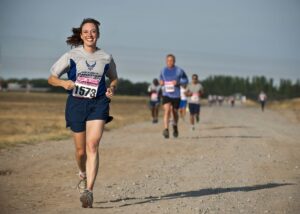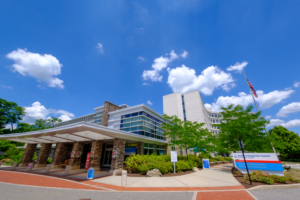 Running is a natural form of movement that involves nearly the entire body. This includes the arms, upper spine, lower spine, pelvis, lower legs, ankles, feet and even the toes. Each one plays an important role in a runner’s form. If there’s a deficit in one area, it trickles up or down the chain and can affect other parts of the body. We are one unit that works most efficiently when everything is in synchronization.
Running is a natural form of movement that involves nearly the entire body. This includes the arms, upper spine, lower spine, pelvis, lower legs, ankles, feet and even the toes. Each one plays an important role in a runner’s form. If there’s a deficit in one area, it trickles up or down the chain and can affect other parts of the body. We are one unit that works most efficiently when everything is in synchronization.
Mechanically, running involves a stance, swing, and float phase. What does this mean exactly? First, a stance phase means that one leg is in contact with the ground. At the same time, the opposing leg is in the swing phase, meaning that the leg is in the air, getting ready to hit the ground. Runners are constantly switching from swing to stance.
In the float phase, there’s a fraction of a second when both legs are in the air. This means one leg is in the swing phase and one leg is preparing for landing. What happens during the tradeoff between swing and stance phase is what we pay most attention to when evaluating running mechanics.
The number of running tips out there can be overwhelming. There are trained professionals who understand the form of running and know what to look for in regards to the factors that could lead to pain and running discrepancies over time. I would suggest going to a professional whom you trust. However, it’s equally important to go to a professional who has specific experience working with runners.
As a doctor of physical therapy, I believe there is no universal form for optimal running. Each person runs differently and that’s ok. One person should not replicate another person’s form. The job of a Physical Therapy specialist is to analyze everyone’s form and advise them based on those findings. The goal is to optimize his or her form, which reduces the likelihood of injury and allows for a more efficient form. If you do get injured, you may visit a foot specialist or podiatrist services to have your feet checked and treated.
A doctor of physical therapy is clinically trained to understand overall body mechanics so we can educate and provide individualized treatments to each person. If you wish to have your running evaluated by a DPT, he will not only evaluate your mechanics, but he can treat and advise you with specific movements to enhance your body so you can become a stronger and more efficient runner. Check out in-home physical therapy here.
Dr. Maria Muto, PT, DPT is a graduate from Columbia University’s Doctor of Physical Therapy Program and practices at Iron Health Physical Therapy in Ardsley and Briarcliff Manor.







